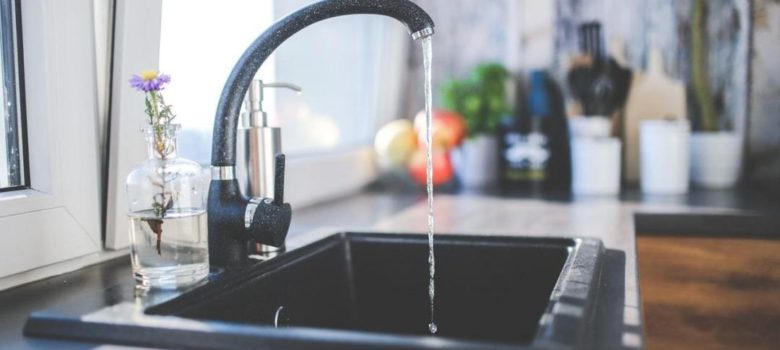
- Aug. 07
- Richard Parker
H2O in the Home: Tips to Cut Water Wastage
Water is considered such a fundamental resource, so essential to life, that its presence is the primary method scientists use to define whether a planet can be considered habitable. However, for us earthlings, water is something that few of us think very much about at all – we’re all very accustomed to turning the taps and enjoying free-flowing, clean, water immediately.
Unfortunately, water waste is a real problem, and one that could potentially worsen over the coming years. If you want to help tackle this problem, and improve your water management in your own home, then here’s a few ideas you might want to try…
Keep Your Showers as Short as Possible
If you shower for eight minutes per day, then around 17 gallons will be used each time – an amount that is then doubled, tripled, or potentially even more depending on the number of people in your household. However, if you can cut down to just four minutes, then the reduction in water usage is impressive; over the course of a week, your own own showers will save nearly 60 gallons in total.
Collect Rainwater to Use in “Outdoor” Tasks
Many modern homes have a hose pipe attached to the main water supply of their property. While this may be convenient when it comes to ensuring your garden plants are irrigated, power washing your patio, or cleaning your car, it can also be incredibly wasteful – not to mention the use of hoses is often banned when drought conditions threaten. It is therefore preferable to consider collecting rainwater; companies such as Tank Direct can supply containers that will store water safely, and which you can then use to keep your garden lush and green without having to use the mains supply.
Switch to a “Full Loads Only” Policy
Dishwashers and washing machines can use a huge amount of water; even particularly efficient washing machines, for example, will use up to 30 gallons per load. Of course, that doesn’t mean you need to necessarily eschew these modern conveniences and wash everything by hand, but it can be helpful if you only run these water-hungry appliances when they have a completely full load.
Fix Dripping Faucets
The relentless slow, steady drip drip drip of a dripping faucet can be incredibly irritating to live with, so investigating why a tap is dripping and fixing it as soon as possible – and thus halting the unpleasant sound of dripping – is doubly beneficial. You may be able to rectify the problem yourself but you can also call a local plumber or handyman if you’d rather outsource the task to a pro.
Use a Fridge Jug for Cold Water
Many people will run a faucet for awhile in order to let the water cool; it’s a natural habit, and one that pretty much everyone on the planet has done at some point. However, it does mean that the warmer water simply goes straight down the drain. To prevent this, invest in a fridge judge and keep this topped up at all times, so whenever you’re in need of a refreshing drink, you’ve already got perfectly chilled water on hand.
Reduce or Reuse Cooking-Related Waste Water
The most conventional method of cooking vegetables is to boil them, but doing so can create a large amount of waste water. Investing in a steamer will create far less waste, so if you have room in your kitchen for another gadget, then consider making the switch. If you’d rather not buy a steamer, then try to find a use for the water you have used for cooking – it could, for example, be used to mist your houseplants.
Mist Rather Than Water Houseplants
Anyone who has ever owned a houseplant knows that over-watering is easily done; your hand slips and suddenly your favorite plant is swimming in its own makeshift swimming pool. When this happens, it’s not great for the plant, and it’s also problematic in terms of water waste. A spill can mean that much of the excess water is lost to evaporation; the amount will be small, but when it comes to water waste, it all adds up. By switching to misting plants with a spray bottle rather than actually pouring water into the container, you stand the best chance of preserving as much water as possible – you can still mist large amounts for plants that need it, but you’re in complete control of exactly how much water is dispensed.
Establish Where Your Main Water Supply Shut-Off Is
Finally, if you’re unsure how to temporarily cut the water supply to your home, then finding out can help to prevent a huge sudden loss of water due to a leak or similar issue. The location of the shut-off valve varies between properties, but your water supplier should be able to tell you where yours is if required.
Always Turn Faucets off When Not Directly in Use
When seeking to reduce water waste, developing the habit of only running a faucet for as long as is absolutely necessary is a small change that can offer significant benefits. Leaving a faucet running can cause a surprisingly large amount of water to be lost, so even if you have to turn the faucet back on a few minutes later it’s still worth it, given that the flow of water is flowing at a rate of one (bathroom faucets) or two gallons (kitchen faucets) per minute.
Upgrade or Adapt Your Toilet to Reduce Water Use
Modern toilets are designed to use as little water as possible, with some able to bring the number down to less than two gallons per flush. However, older toilets can sometimes use up to seven gallons per flush – an amount that can really add up over the course of a day. Switching to a more modern, water-saving toilet is the most straightforward way to cut down on water usage in this area, or you can use a cistern displacement system to adapt your existing toilet. These devices are relatively cheap to buy, or you can make your own version if you prefer.
In Conclusion
All of the methods above can help reduce water waste and improve overall water management in your home, but there is one big benefit we’ve thus far overlooked: following the tips above could reduce your water bills. As a result, giving the ideas above a try genuinely can be considered to offer a multitude of benefits – to the environment, to water conservation efforts, and to your budget.



